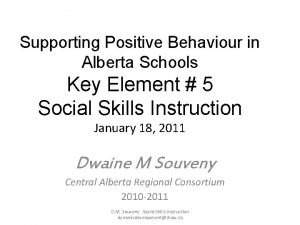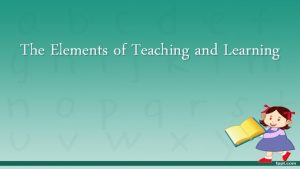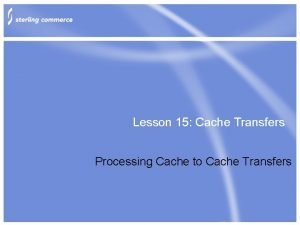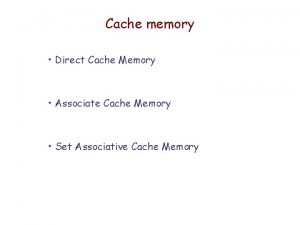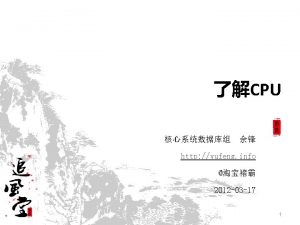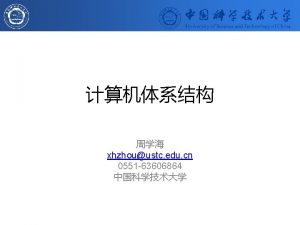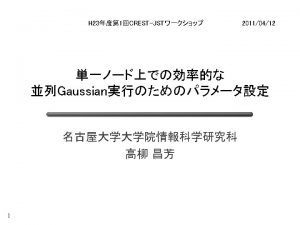CACHE L 3 Supporting Teaching Learning in Schools









- Slides: 9

CACHE L 3 Supporting Teaching & Learning in Schools Unit CYP 3. 4 – Support Children and Young Peoples Health & Safety

CYP 3. 4 Support CYP H & S This unit requires you to know about procedures which exist in your school for keeping young people and children safe in the learning and outdoor environment. It is also important when you go out on school visits, including outdoor activity centres.

TDA 3. 1 Communication Health and safety advice on legal duties and powers for local authorities, school leaders, school staff and governing bodies. February 2014 “Children should be able to experience a wide range of activities. Health and safety measures should help them to do this safely, not stop them. It is important that children learn to understand manage the risks that are a normal part of life. Common sense should be used in assessing and managing the risks of any activity. Health and safety procedures should always be proportionate to the risks of an activity. Staff should be given the training they need so they can keep themselves and children safe and manage risks effectively. ” (Referenced from the document)

TDA 3. 1 Communication Health and Safety Executive (HSE) § § § HSE relates to all different types of work related issues, they cover all aspects of health and safety in all different environments. There are many different sources of current guidance that early years and educational settings can use in order to plan for a healthy and safe environment or service. Risk education: this programme was set up in 2000 by the HSE to identify and influence the degree to which risk management techniques are taught in schools. General teaching requirements for Health and Safety: This new health and safety requirement was drawn up by the QCA after consultation with the Health and Safety Executive. It allows staff to familiarise themselves with the concept of risk and develop pupils’ ability to assess and control risks Incident/accident: all major accidents must be reported Workers roles and responsibilities: rights to work in a free environment. It is important that you take care of your own health and safety and others around you if you are endangering them. Your employer must tell you what to do in an emergency.

TDA 3. 1 Communication The Health and Safety at Work Act (1974) The Law § The main legislation is The Health and Safety at Work Act 1974 and regulations made under that Act. 1 § The employer (the local authority, governing body or proprietor) is responsible for health and safety, though tasks may be delegated to staff. § Employees also have a duty to look after their own and others’ health and safety. § It is very rare for school staff to be prosecuted under criminal law with regard to accidents involving children. § Employers, school staff and others also have a duty under the common law to take care of pupils in the same way that a prudent parent would do so. § Most claims for negligence are brought against the employer (who has public liability insurance) and not individual members of staff.

TDA 3. 1 Communication Health & Safety Policy for your School § Are you aware of where your school’s Health and Safety policy is situated? § Have you been given a copy to read? § How has your school recorded that you have read it and you are implementing the correct procedures? § Can you find references to the current legislation in the policy?

TDA 3. 1 Communication § Can you identify the potential hazards in the classroom on § page 138 of your book? § When you walk around your own settings what are you looking for?

TDA 3. 1 Communication What is a balanced approach to risk management? § § § A balanced approach has to take into account: a child’s age a child’s needs – physical and mentally a child’s ability recognising the importance of risk and challenge to a child’s development avoid excessive risk taking § Thinking about all the above how would you approach the Case Study on page 142. § What would the risks be? § Would the age of the children be an issue? § What precautions can you take?

TDA 3. 1 Communication UNICEF – Convention of Human Rights of Children UNICEF is an international human rights treaty that grants all children and young people (under 17 years) a comprehensive set of rights. The UK signed the convention on 19 th April 1990, ratified it on 16 th December 1991 and it came into force on 15 th January 1992. This gives the children and young people the right to learn and develop, the right to be protected against harm and make their own choices.
 Supporting positive behaviour in alberta schools
Supporting positive behaviour in alberta schools Huntsville city schools powerschool login
Huntsville city schools powerschool login Reach safety target
Reach safety target Aim of teaching economics
Aim of teaching economics Cuadro comparativo e-learning y b-learning
Cuadro comparativo e-learning y b-learning Definitions of micro teaching
Definitions of micro teaching Thinking schools learning nation
Thinking schools learning nation What are the elements of teaching and learning
What are the elements of teaching and learning New jersey center for teaching and learning
New jersey center for teaching and learning New jersey center for teaching and learning
New jersey center for teaching and learning
